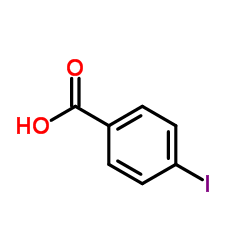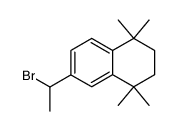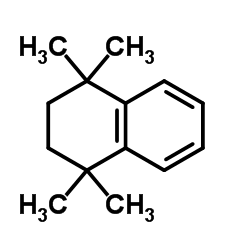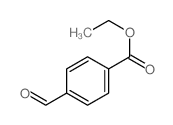71441-28-6
| Name | arotinoid acid |
|---|---|
| Synonyms |
Ro 13-7410
Arotinoid Acid MFCD00673917 4-[(1E)-2-(5,5,8,8-tetramethyl-5,6,7,8-tetrahydro-2-naphthalenyl)-1-propen-1yl]benzoic acid TTNPB Tocris-0761 Arotinoic acid TTNPB (Arotinoid Acid) 4-[(1E)-2-(5,5,8,8-Tetramethyl-5,6,7,8-tetrahydro-2-naphthalenyl)-1-propen-1-yl]benzoic acid (E)-4-[2-(5,6,7,8-tetrahydro-5,5,8,8-tetramethyl-2-naphthalenyl)-1-propenyl]benzoic acid 4-[(1E)-2-(5,5,8,8-Tetramethyl-5,6,7,8-tetrahydronaphthalen-2-yl)prop-1-en-1-yl]benzoic acid Lopac-T-3757 4-[2-(5,6,7,8-tetrahydro-5,5,8,8-tetramethyl-2-naphthalenyl)propen-1-yl] benzoic acid 4-[(E)-2-(5,5,8,8-tetramethyl-6,7-dihydronaphthalen-2-yl)prop-1-enyl]benzoic acid Benzoic acid, 4-[(1E)-2-(5,6,7,8-tetrahydro-5,5,8,8-tetramethyl-2-naphthalenyl)-1-propen-1-yl]- |
| Description | TTNPB is a highly potent RAR agonist. Competitive binding assays using human RARs yield IC50s of α=5.1 nM, β= 4.5 nM, and γ=9.3 nM, respectively. |
|---|---|
| Related Catalog | |
| Target |
IC50: 5.1 nM (RARα), 4.5 nM (RARβ), 9.3 nM (RARγ)[1] |
| In Vitro | TTNPB inhibits binding of [3H]tRA with IC50s of 3.8 nM, 4 nM, and 4.5 nM for human RARα, β, and γ, respectively. TTNPB competes for [3H]tRA binding to CRABPI with IC50s of 1800 nM[1]. |
| Kinase Assay | Labeled and unlabeled retinoids are added to nucleosol or cytosolic fractions in ethanol so that the total amount of ethanol added is constant in all tubes and did not exceed 2% of the incubation volume. The receptor preparations are incubated with retinoids at 47°C for 4-6 hr. Sephadex PD-10 desalting columns are used to separate bound radioligand from free radioligand after equilibrium is achieved. For competitive binding assays, varying concentrations of unlabeled competing ligand are incubated with the appropriate nucleosol or cytosol in the presence of a fixed concentration of [3H]tRA (sp act. 49.3 Ci/mmol) or [3H]9-cis RA (sp. act. 24.0 Ci/mmol). Final concentrations of [3H] tRA and [3H]9-cis RA for nuclear receptor binding assays are 5nM. Final concentrations of [3H]tRA for CRABP binding assays is 30 nM. The IC50s are calculated. For saturation kinetics, increasing concentrations of radiolabeled ligand ([3H]tRA sp. act. 49.3 Ci/mmol, [3H]TTNPB sp. act. 5.5 Ci/mmol) are added to the nucleosol of the appropriate receptor subtype in the presence (nonspecific binding) or absence (total binding) of a 100-fold molar excess of the corresponding unlabeled retinoid. Specific binding is defined as the total binding minus nonspecific binding. Saturation kinetics are calculated[1]. |
| References |
| Density | 1.1±0.1 g/cm3 |
|---|---|
| Boiling Point | 486.8±44.0 °C at 760 mmHg |
| Molecular Formula | C24H28O2 |
| Molecular Weight | 348.478 |
| Flash Point | 228.6±23.1 °C |
| Exact Mass | 348.208923 |
| PSA | 37.30000 |
| LogP | 8.62 |
| Vapour Pressure | 0.0±1.3 mmHg at 25°C |
| Index of Refraction | 1.579 |
| Storage condition | −20°C |
| Water Solubility | chloroform/methanol: soluble9.80 - 10.20 mg/mL, clear, colorless to light yellow |
CHEMICAL IDENTIFICATION
HEALTH HAZARD DATAACUTE TOXICITY DATA
|
| Symbol |


GHS07, GHS08 |
|---|---|
| Signal Word | Danger |
| Hazard Statements | H315-H319-H335-H360 |
| Precautionary Statements | P201-P261-P305 + P351 + P338-P308 + P313 |
| Personal Protective Equipment | Eyeshields;full-face particle respirator type N100 (US);Gloves;respirator cartridge type N100 (US);type P1 (EN143) respirator filter;type P3 (EN 143) respirator cartridges |
| Hazard Codes | T: Toxic; |
| Risk Phrases | R60 |
| Safety Phrases | 53-26-36/37/39-45 |
| RIDADR | NONH for all modes of transport |
| WGK Germany | 3 |
| RTECS | DH6834900 |
| Precursor 9 | |
|---|---|
| DownStream 0 | |


![2-[4-(1E)-2-(5,5,8,8-tetramethyl-5,6,7,8-tetrahydro-2-naphthalenyl)-1-propen-1yl]phenyl-4,4-dimethyl-2-oxazoline structure](https://image.chemsrc.com/caspic/348/71441-33-3.png)



![[1-(5,6,7,8-tetrahydro-5,5,8,8-tetramethyl-2-naphthyl)-ethyl]-triphenylphosphonium bromide structure](https://image.chemsrc.com/caspic/018/69251-24-7.png)


